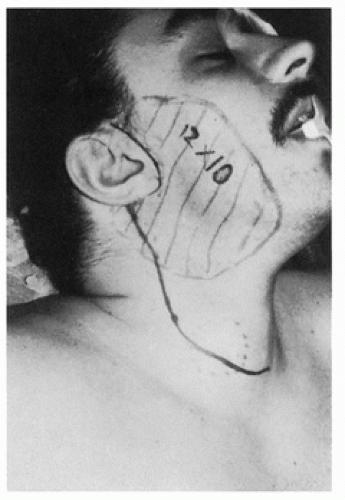Microvascular Free Transfer of A Deepithelialized Groin Flap to The Cheek
L. A. SHARZER
Soft-tissue augmentation with autogenous dermis and fat is a well-known and well-accepted technique. Composite dermal fat segments may be transferred as grafts (nonvascularized) (1, 2, 3, 4), as pedicle flaps (vascularized) (5, 6, 7), or as free flaps (microvascular) (8, 9, 10, 11, 12). Nonvascularized grafts undergo 40% to 50% resorption and must therefore be overcorrected at the time of transfer. Even then, resorption is unpredictable and the ultimate outcome uncertain. Because flaps retain their circulation, the volume transferred is the volume that remains, barring excessive generalized weight gain or weight loss. Free flaps, in general, allow greater leeway in flap design and donor-site choice than pedicle flaps, and this is true for deepithelialized free flaps as well.
INDICATIONS
The most common indications for deepithelialized free-flap transfer are Romberg’s hemifacial atrophy, congenital or acquired hemifacial microsomia, and contour defects related to trauma or cancer surgery.
ANATOMY
The deepithelialized groin flap based on the superficial circumflex iliac vessels is particularly well suited to contour reconstructions and has been my flap of choice.
 FIGURE 138.1 Soft-tissue defect outlined on the cheek.
Stay updated, free articles. Join our Telegram channel
Full access? Get Clinical Tree
 Get Clinical Tree app for offline access
Get Clinical Tree app for offline access

|





